 Honda CBR650 - Service manual > Service rules
Honda CBR650 - Service manual > Service rules
1. Use genuine Honda or Honda-recommended parts and lubricants or their equivalents. Parts that do not meet Honda's design specifications may cause damage to the motorcycle.
2. Use the special tools designed for this product to avoid damage and incorrect assembly.
3. Use only metric tools when servicing the motorcycle. Metric bolts, nuts and screws are not interchangeable with English fasteners.
4. Install new gaskets, O-rings, cotter pins, and lock plates when reassembling.
5. When tightening bolts or nuts, begin with the larger diameter or inner bolt first. Then tighten to the specified torque diagonally in incremental steps unless a particular sequence is specified.
6. Clean parts in cleaning solvent upon disassembly. Lubricate any sliding surfaces before reassembly.
7. After reassembly, check all parts for proper installation and operation.
8. Route all electrical wires as shown in the Cable and Harness Routing.
9. Do not bend or twist control cables. Damaged control cables will not operate smoothly and may stick or bind.
ABBREVIATION
Throughout this manual, the following abbreviations are used to identify the respective parts or systems.
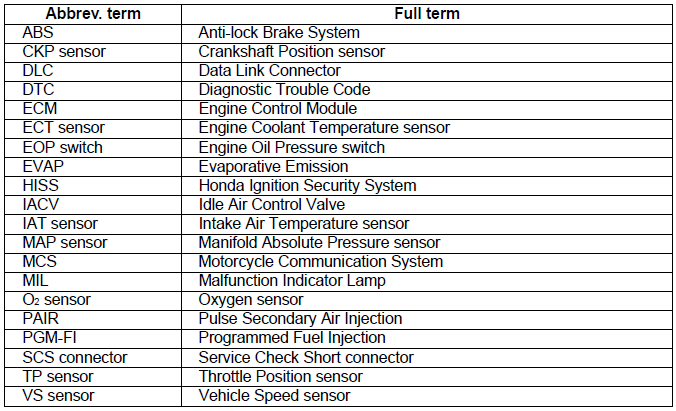
DESTINATION CODE
Throughout this manual, the following codes are used to identify individual types for each region.

Model identification
CBR650FA shown:
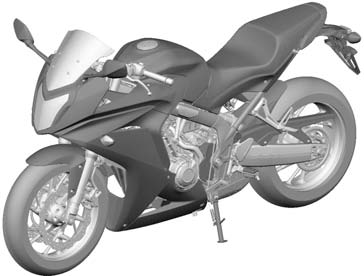
CB650FA shown:
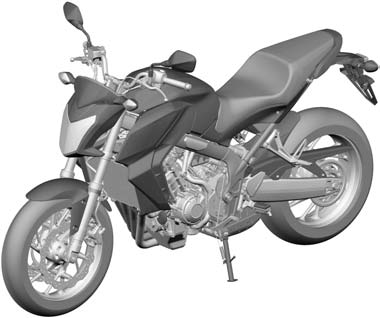
This manual covers following models:
- CBR650F (Conventional Brake)
- CBR650FA (ABS)
- CB650F (Conventional Brake)
- CB650FA (ABS)

*: Equipped with EVAP control system.
Be sure to refer to the procedure for the appropriate model.
SERIAL NUMBERS/LABELS
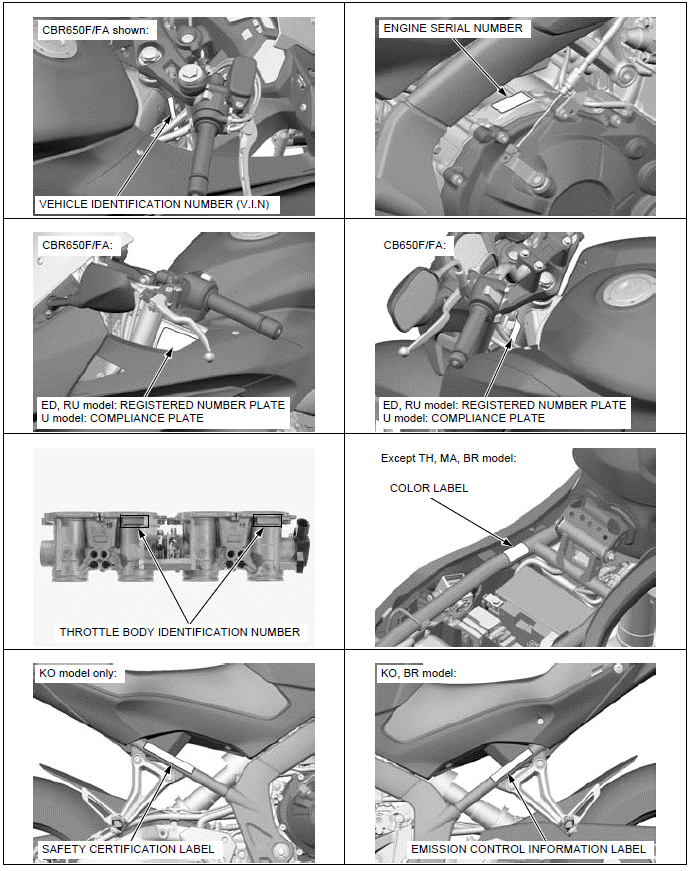
Specifications
GENERAL SPECIFICATIONS
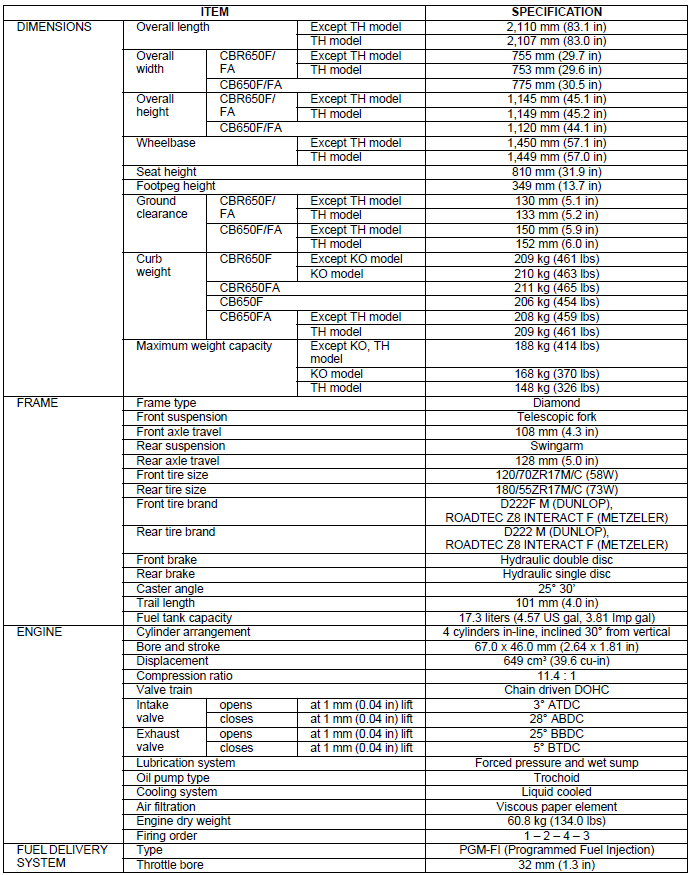
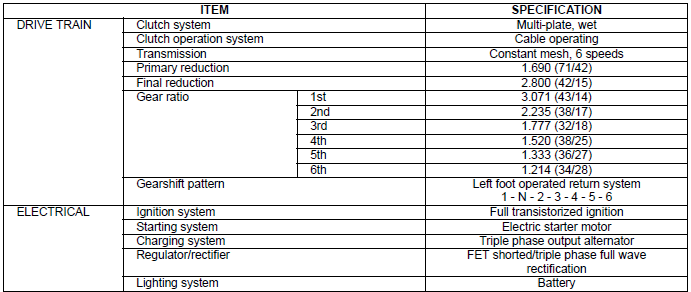
PGM-FI SYSTEM SPECIFICATIONS

IGNITION SYSTEM SPECIFICATIONS

ELECTRIC STARTER SPECIFICATION

FUEL SYSTEM SPECIFICATIONS

COOLING SYSTEM SPECIFICATIONS

LUBRICATION SYSTEM SPECIFICATIONS
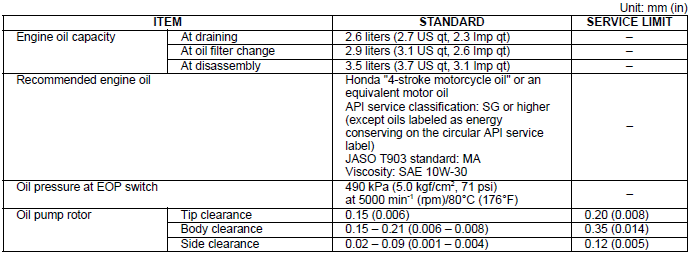
CYLINDER HEAD/VALVES SPECIFICATIONS
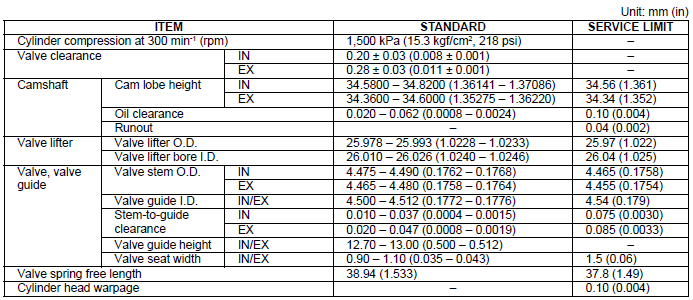
CLUTCH/GEARSHIFT LINKAGE/STARTER CLUTCH SPECIFICATIONS

CRANKCASE/TRANSMISSION SPECIFICATIONS
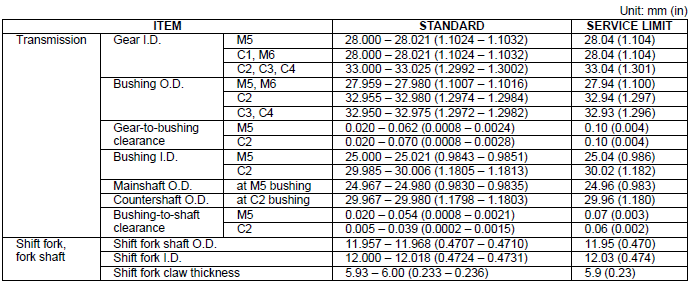
CRANKSHAFT/PISTON/CYLINDER SPECIFICATIONS
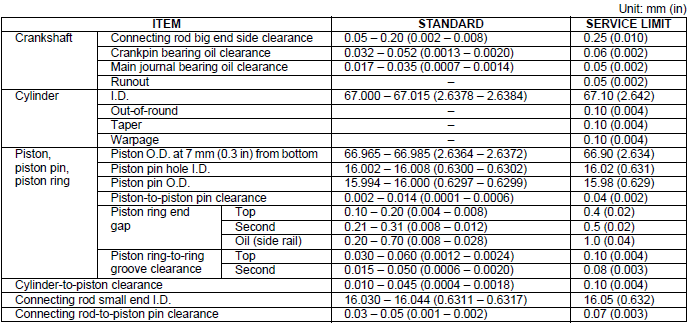
FRONT WHEEL/SUSPENSION/STEERING SPECIFICATIONS
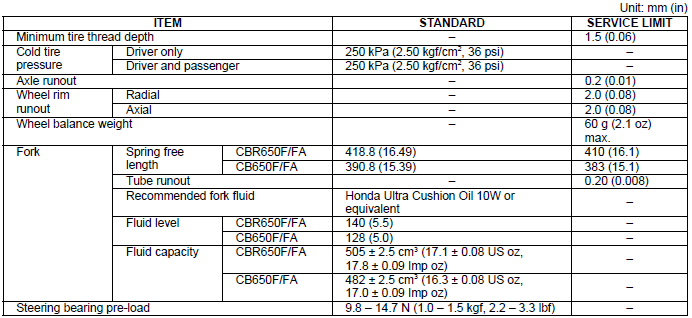
REAR WHEEL/SUSPENSION SPECIFICATIONS

HYDRAULIC BRAKE SPECIFICATIONS
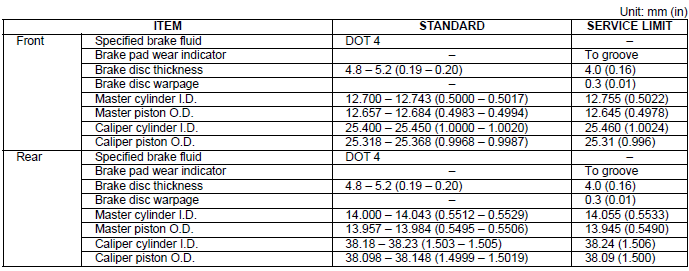
BATTERY/CHARGING SYSTEM SPECIFICATIONS

LIGHTS/METERS/SWITCHES SPECIFICATIONS
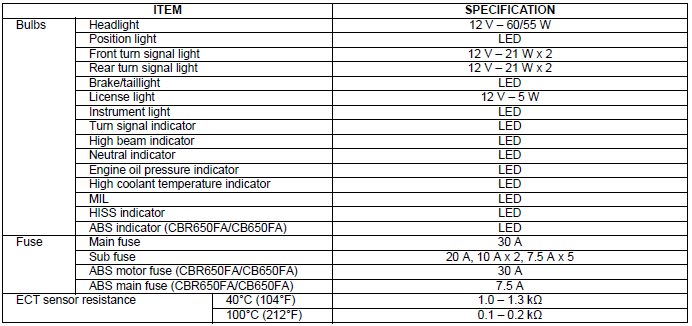
Torque values
STANDARD TORQUE VALUES

- Torque specifications listed below are for specified fasteners.
- Others should be tightened to standard torque values listed above.
ENGINE & FRAME TORQUE VALUES
FRAME/BODY PANELS/EXHAUST SYSTEM
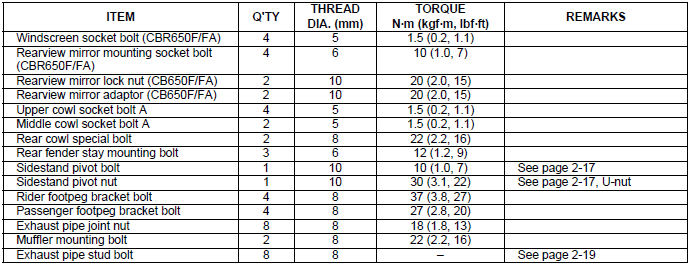
MAINTENANCE
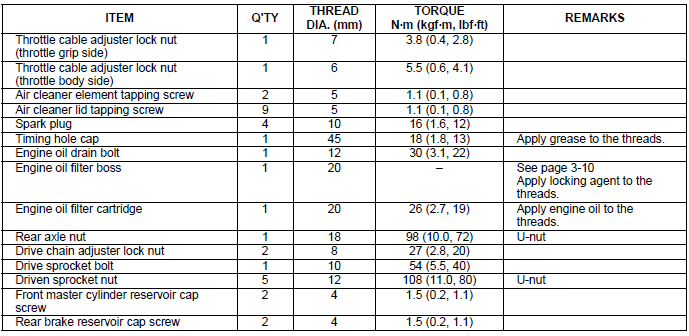
PGM-FI SYSTEM

IGNITION SYSTEM

ELECTRIC STARTER

FUEL SYSTEM

COOLING SYSTEM

LUBRICATION SYSTEM

CYLINDER HEAD/VALVES

CLUTCH/GEARSHIFT LINKAGE/STARTER CLUTCH
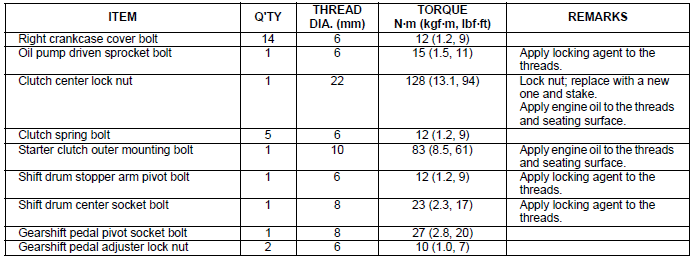
ALTERNATOR

CRANKCASE/TRANSMISSION

CRANKSHAFT/PISTON/CYLINDER

ENGINE REMOVAL/INSTALLATION

FRONT WHEEL/SUSPENSION/STEERING
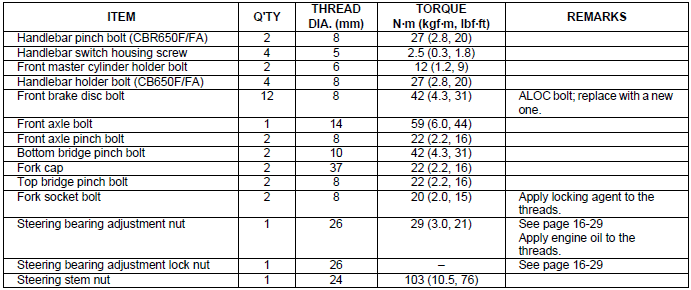
REAR WHEEL/SUSPENSION

HYDRAULIC BRAKE
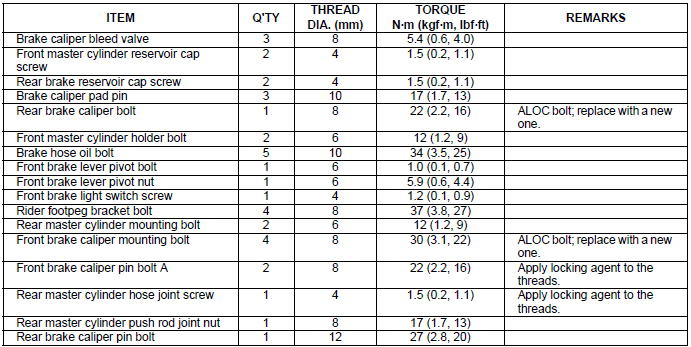
ANTI-LOCK BRAKE SYSTEM (CBR650FA, CB650FA)

LIGHTS/METERS/SWITCHES
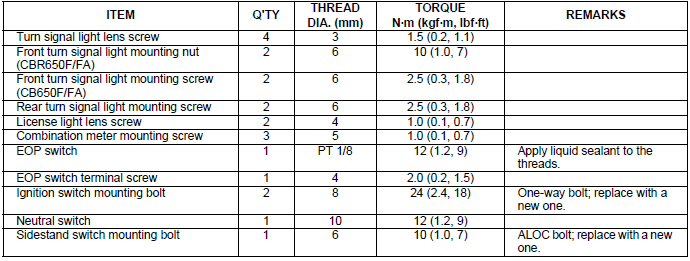
OTHERS
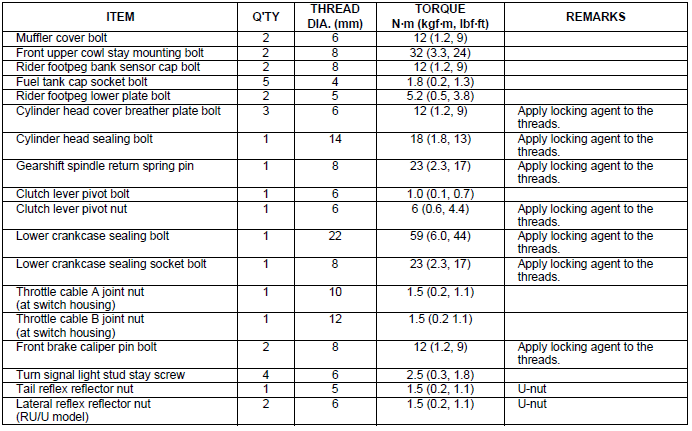
Lubrication & seal points
ENGINE
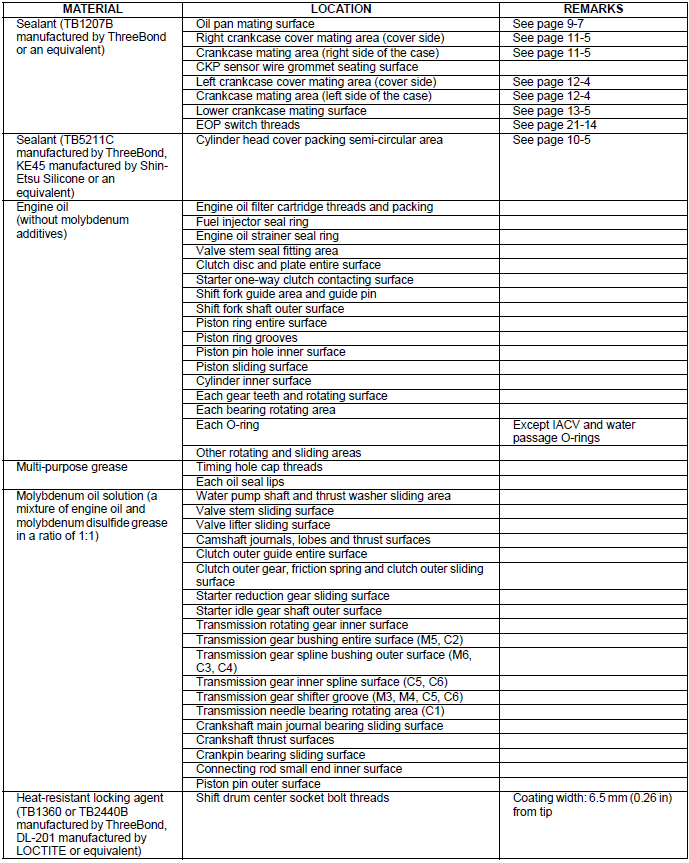
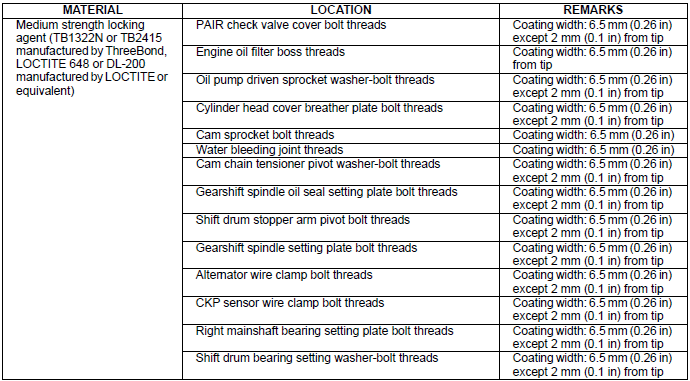
FRAME
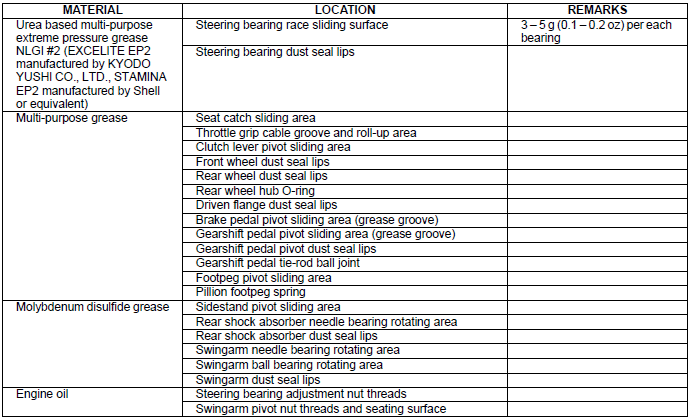
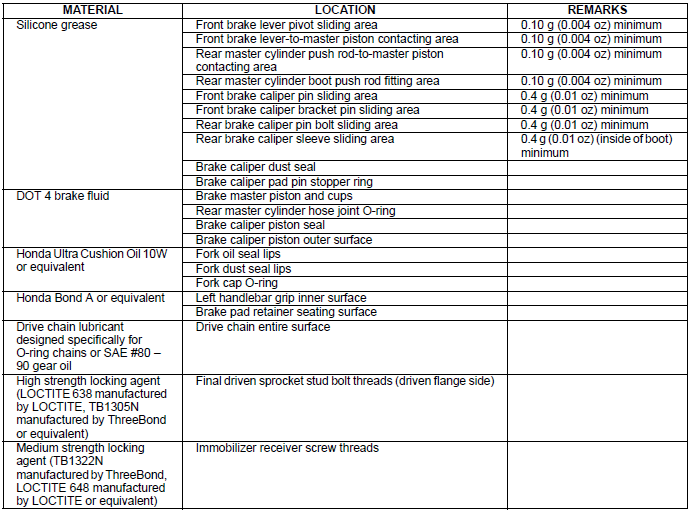
Cable & harness routing
CBR650F
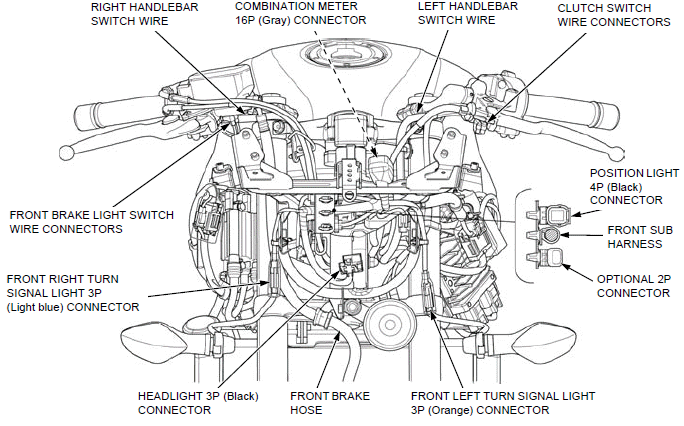
CBR650FA
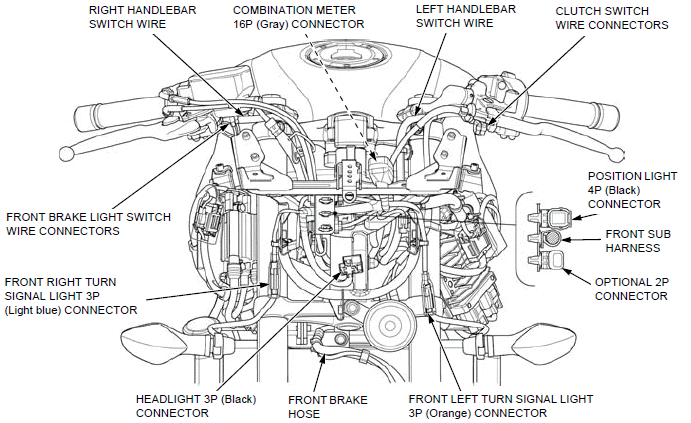
CBR650F/FA
CBR650FA shown:
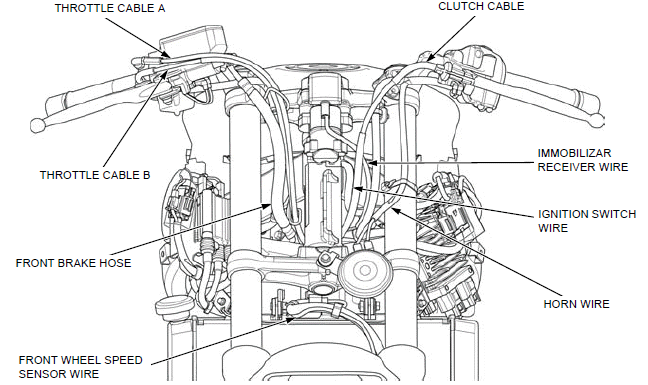
CB650F/FA
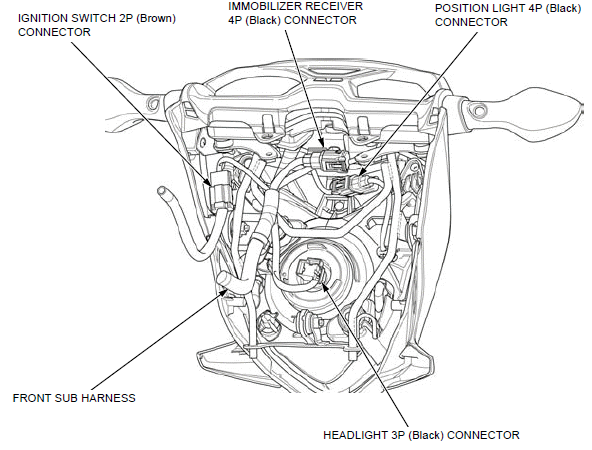
CB650F/FA
CB650FA shown:
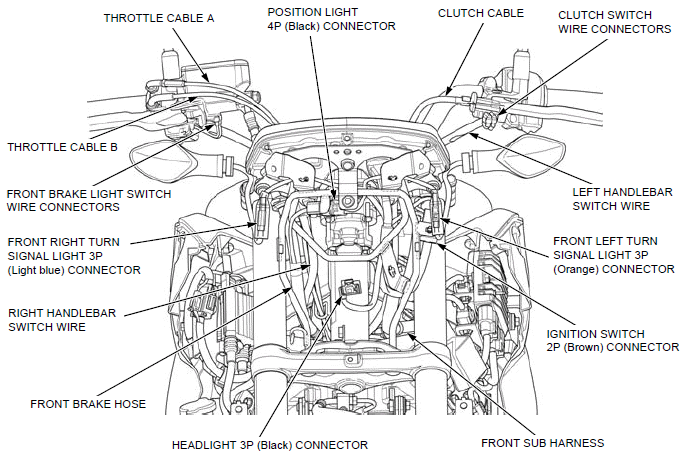
CB650F/FA
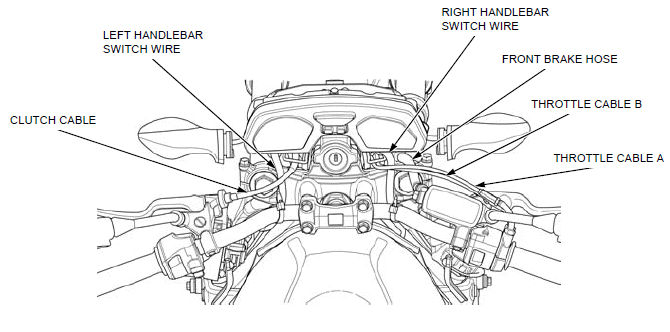
CB650F
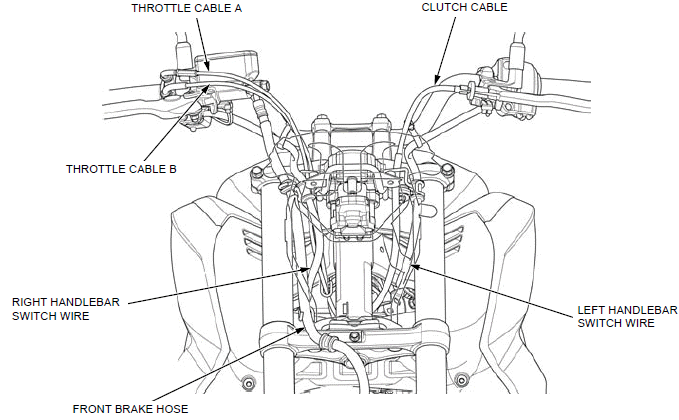
CB650FA
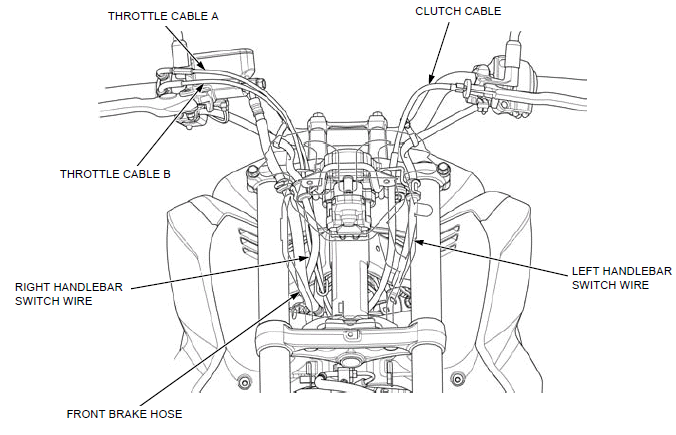
ALL TYPE
CBR650F, CB650F:
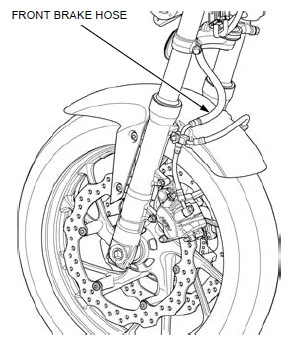
CBR650FA, CB650FA:
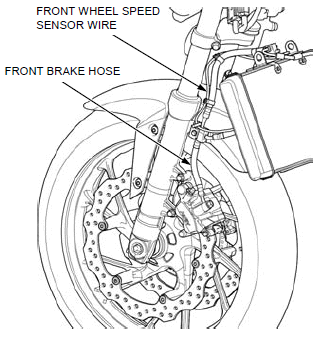
ALL TYPE
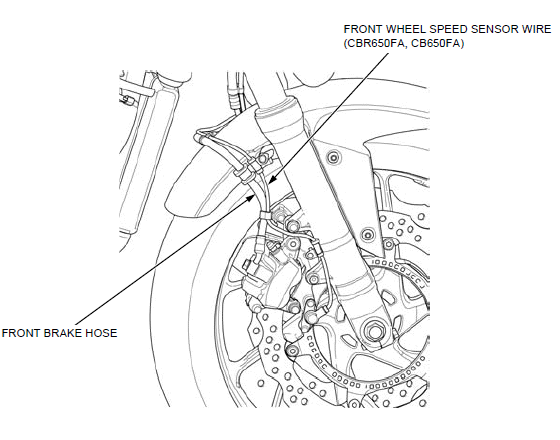
CBR650F/FA
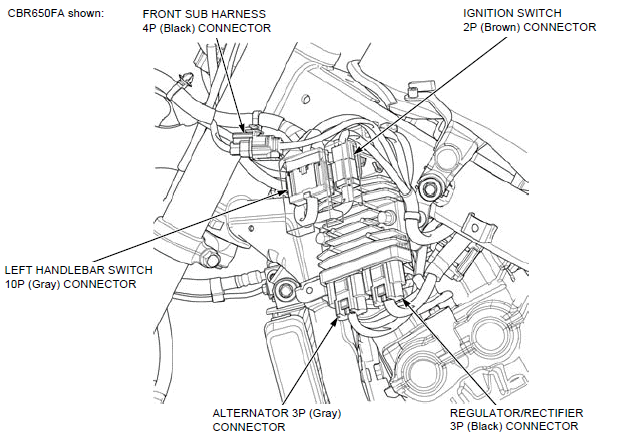
CBR650F/FA
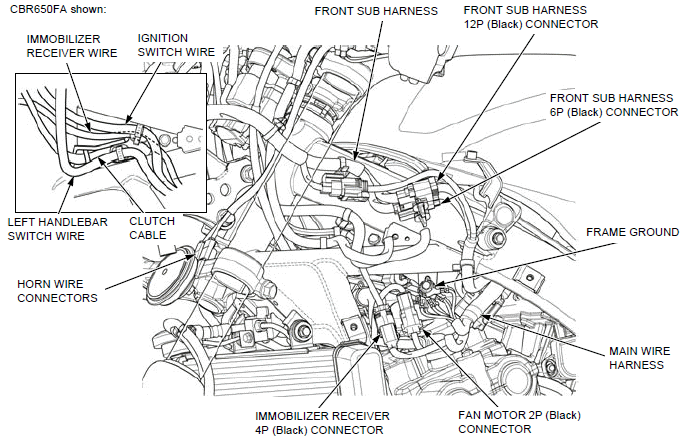
CB650F/FA
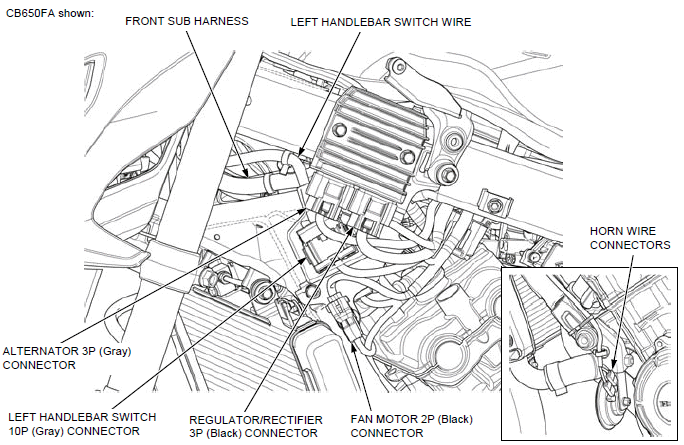
CB650F/FA
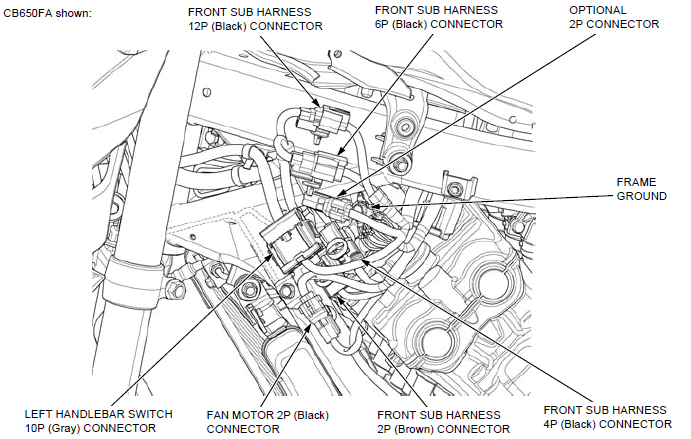
ALL TYPE
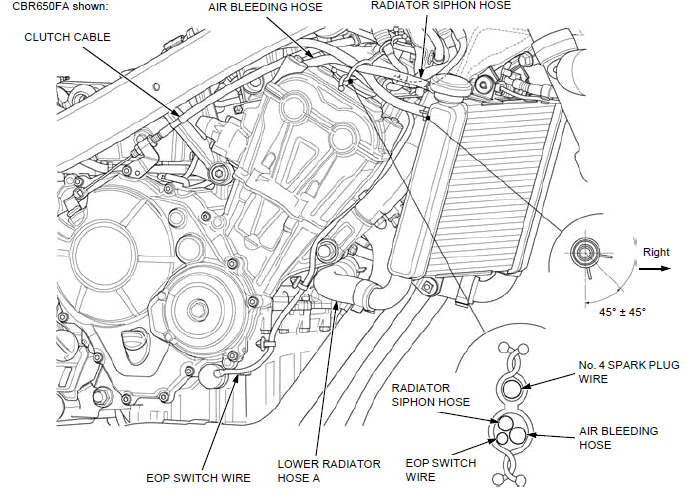
ALL TYPE
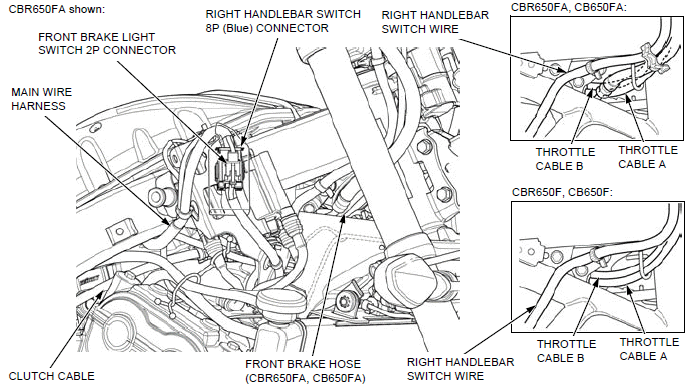
ALL TYPE
CBR650FA shown:
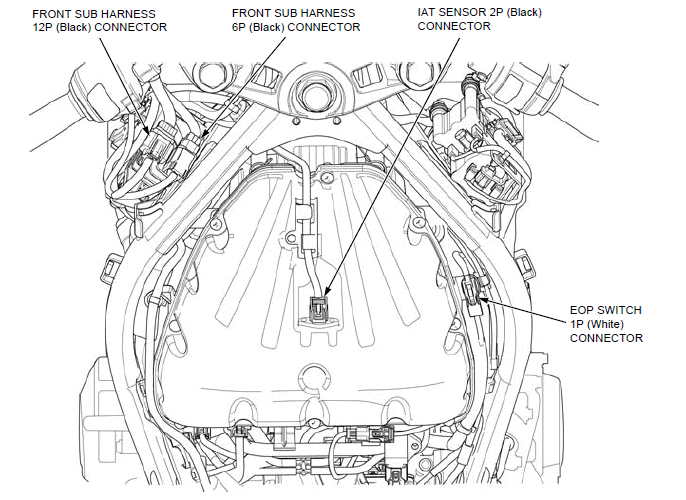
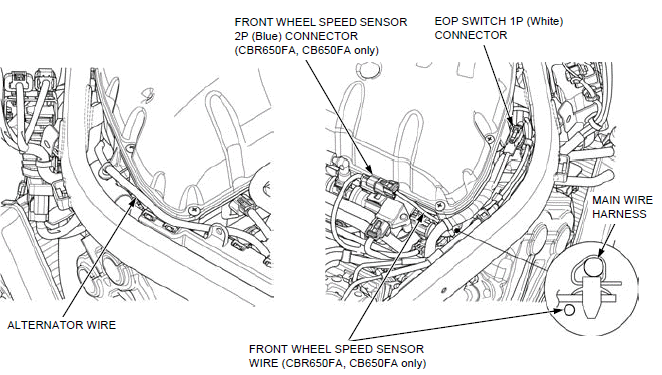
ALL TYPE
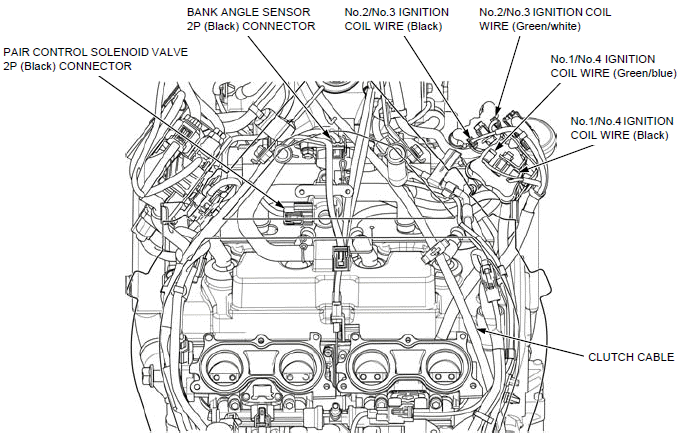
ALL TYPE
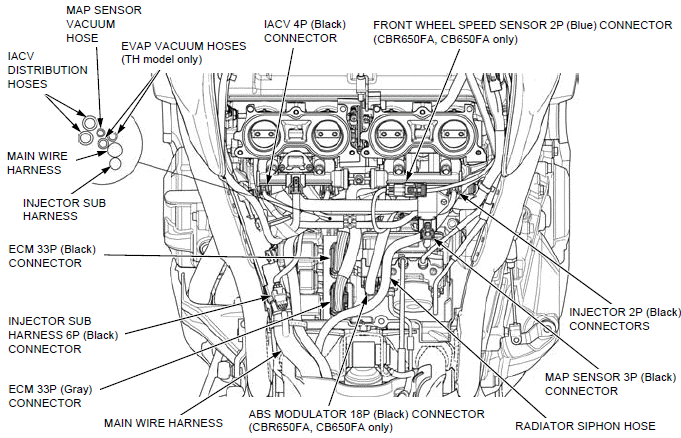
ALL TYPE
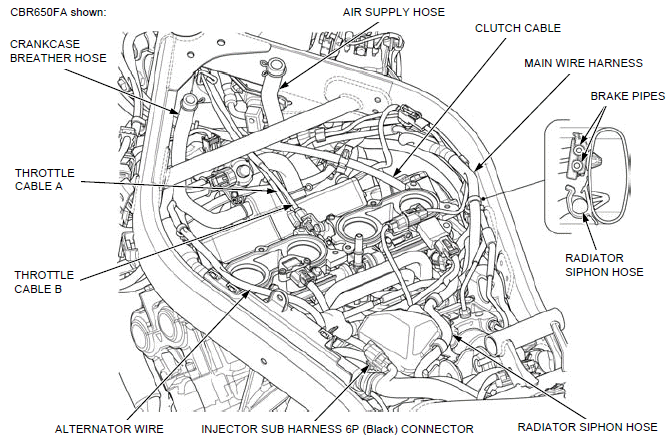
ALL TYPE
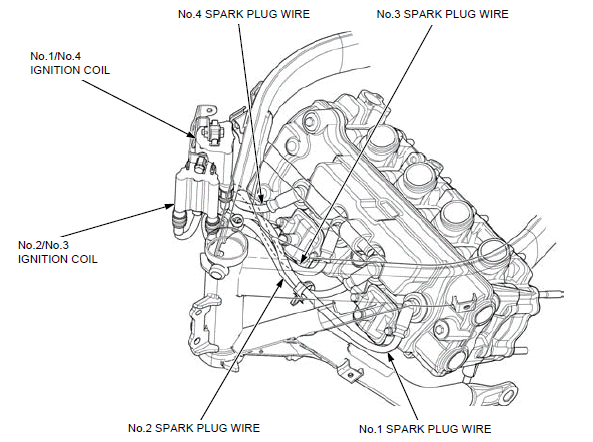
ALL TYPE
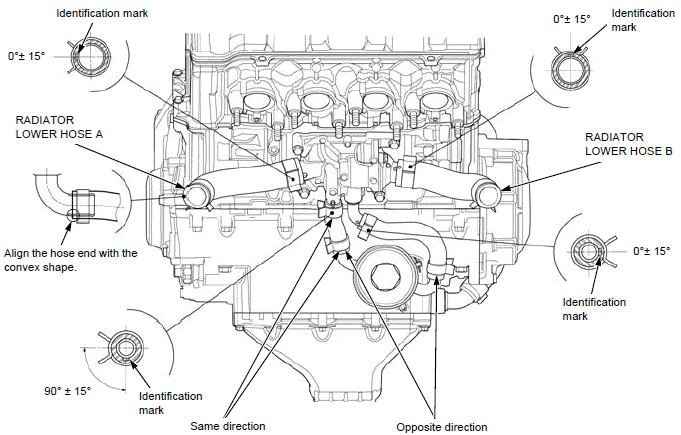
ALL TYPE
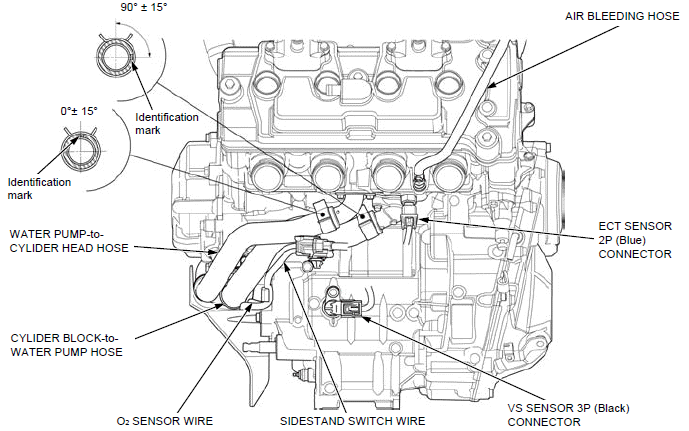
ALL TYPE (Except TH model)
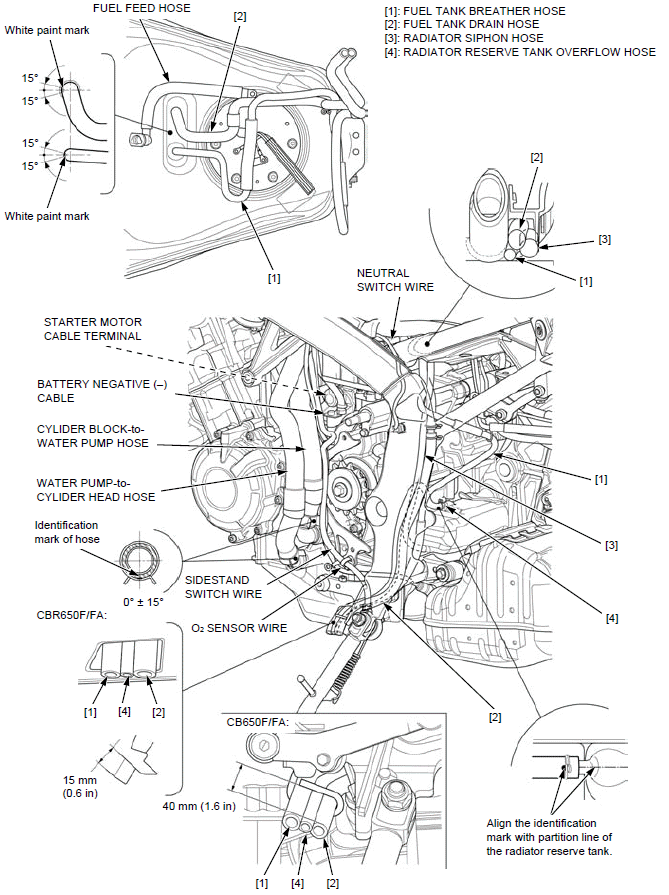
- FUEL TANK BREATHER HOSE
- FUEL TANK DRAIN HOSE
- RADIATOR SIPHON HOSE
- RADIATOR RESERVE TANK OVERFLOW HOSE
CBR650FA, CB650FA (TH model)
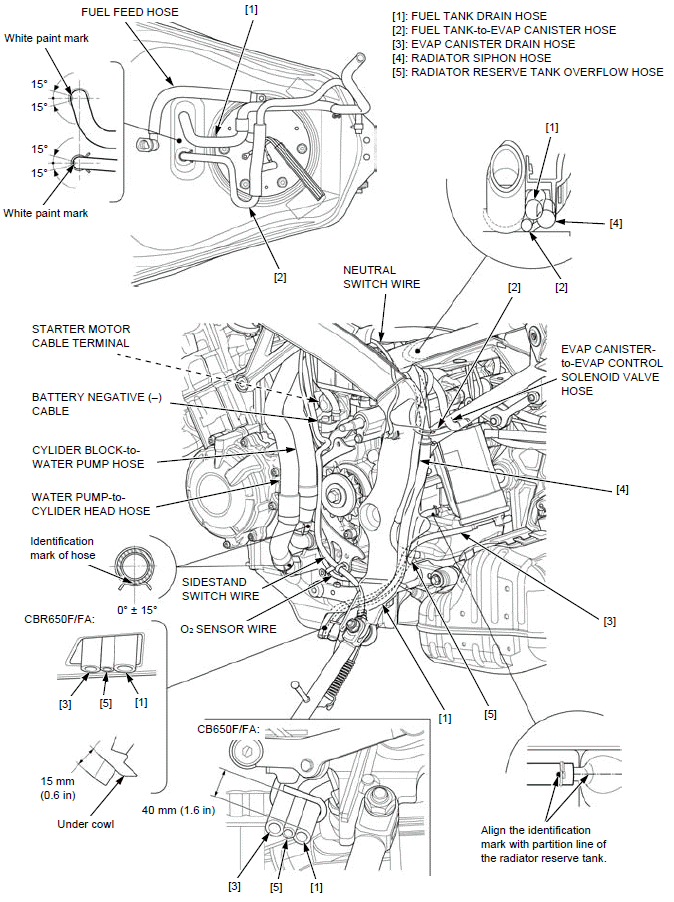
- FUEL TANK DRAIN HOSE
- FUEL TANK-to-EVAP CANISTER HOSE
- EVAP CANISTER DRAIN HOSE
- RADIATOR SIPHON HOSE
- RADIATOR RESERVE TANK OVERFLOW HOSE
ALL TYPE
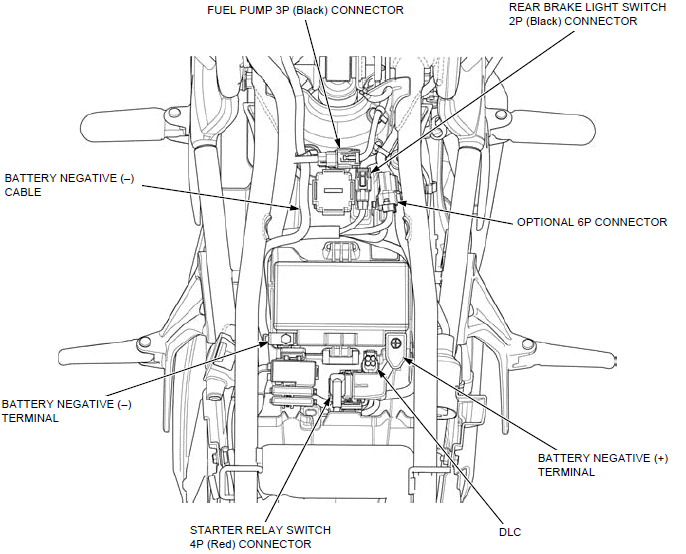
ALL TYPE
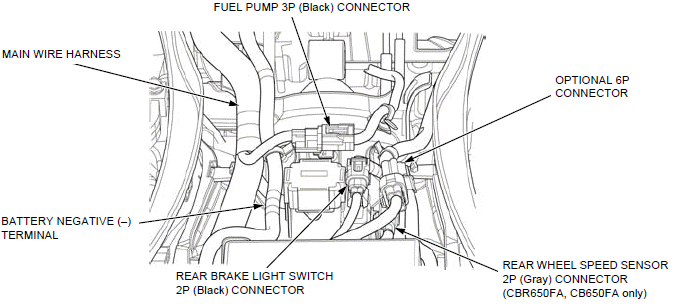
CBR650FA, CB650FA (TH model)
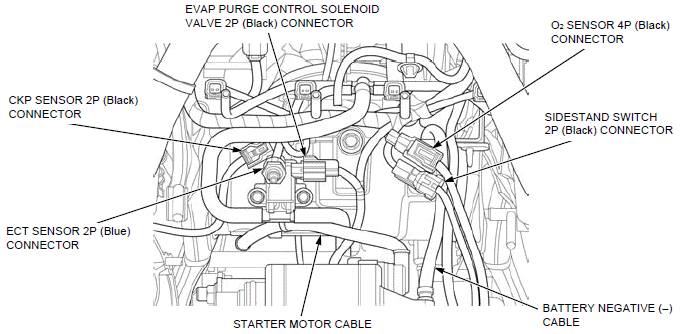
ALL TYPE
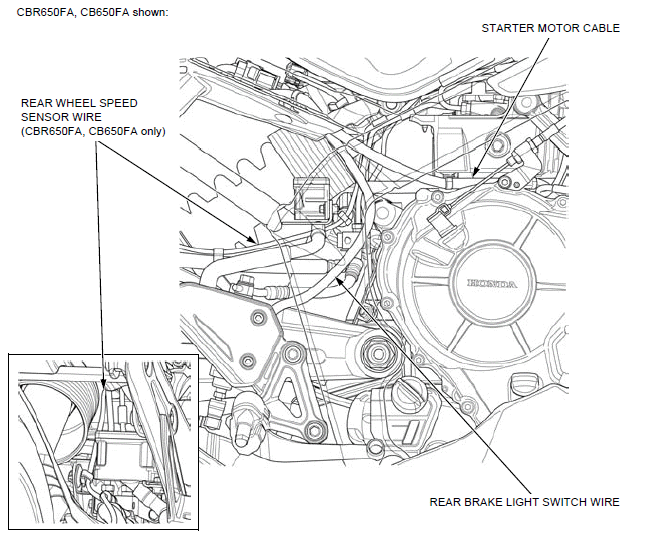
CBR650F, CB650F
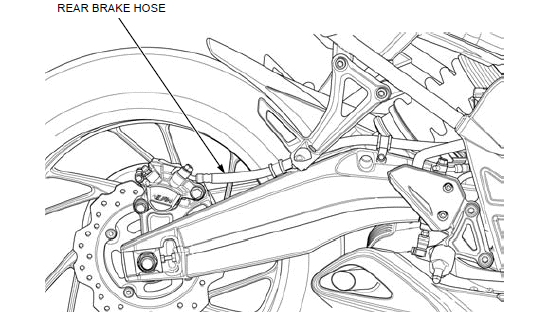
CBR650FA, CB650FA
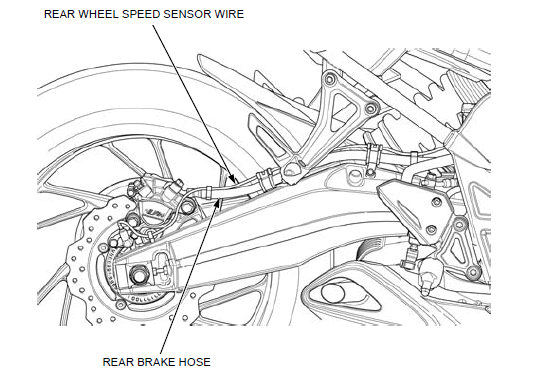
ALL TYPE
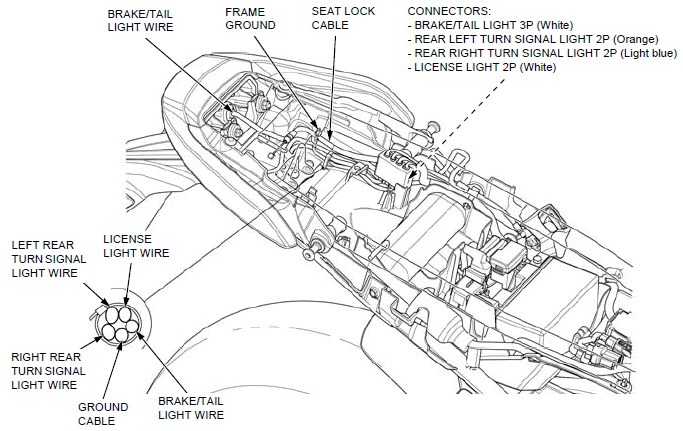
ALL TYPE
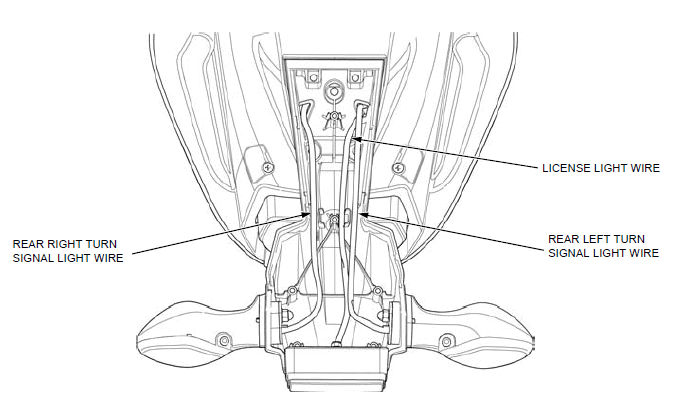
See also:
 Honda CBR650 - Service manual > Emission control systems
Honda CBR650 - Service manual > Emission control systems
SOURCE OF EMISSIONS The combustion process produces carbon monoxide (CO), oxides of nitrogen (NOX) and hydrocarbons (HC). The control of hydrocarbons and oxides of nitrogen is very important because, under certain conditions, they react to form photochemical smog when subject to sunlight. Carbon monoxide does not react in the same way, but it is toxic. Uncontrolled fuel evaporation also releases hydrocarbons to the atmosphere.
 Rider's Manual BMW R 1250 GS GSA
Rider's Manual BMW R 1250 GS GSA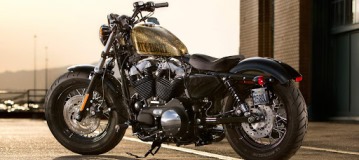 Owner's Manual Harley-Davidson Sportster XL1200X Forty-Eight
Owner's Manual Harley-Davidson Sportster XL1200X Forty-Eight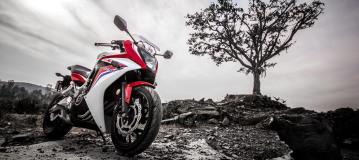 Owner's Manual Honda CBR650R
Owner's Manual Honda CBR650R Service manual Honda CBR650
Service manual Honda CBR650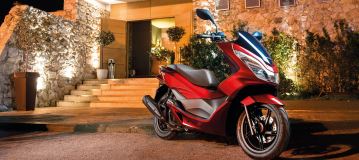 Owner's Manual Honda PCX125
Owner's Manual Honda PCX125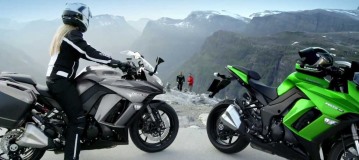 Owner's Manual Kawasaki Z1000SX
Owner's Manual Kawasaki Z1000SX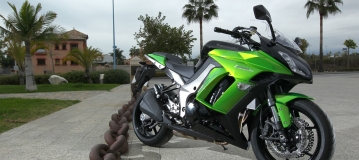 Service manual Kawasaki Z1000SX
Service manual Kawasaki Z1000SX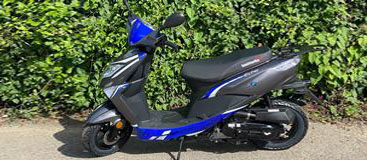 Owner's Manual Lexmoto Echo
Owner's Manual Lexmoto Echo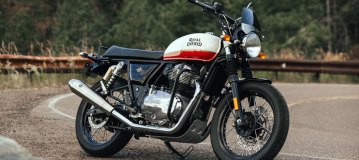 Owner's Manual Royal Enfield Interceptor 650
Owner's Manual Royal Enfield Interceptor 650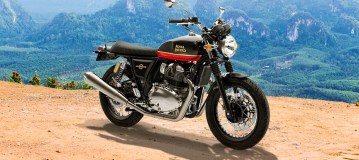 Service manual Royal Enfield Interceptor 650
Service manual Royal Enfield Interceptor 650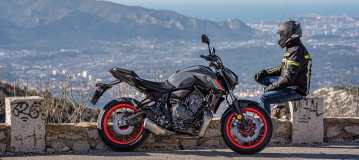 Owner's Manual Yamaha MT-07
Owner's Manual Yamaha MT-07